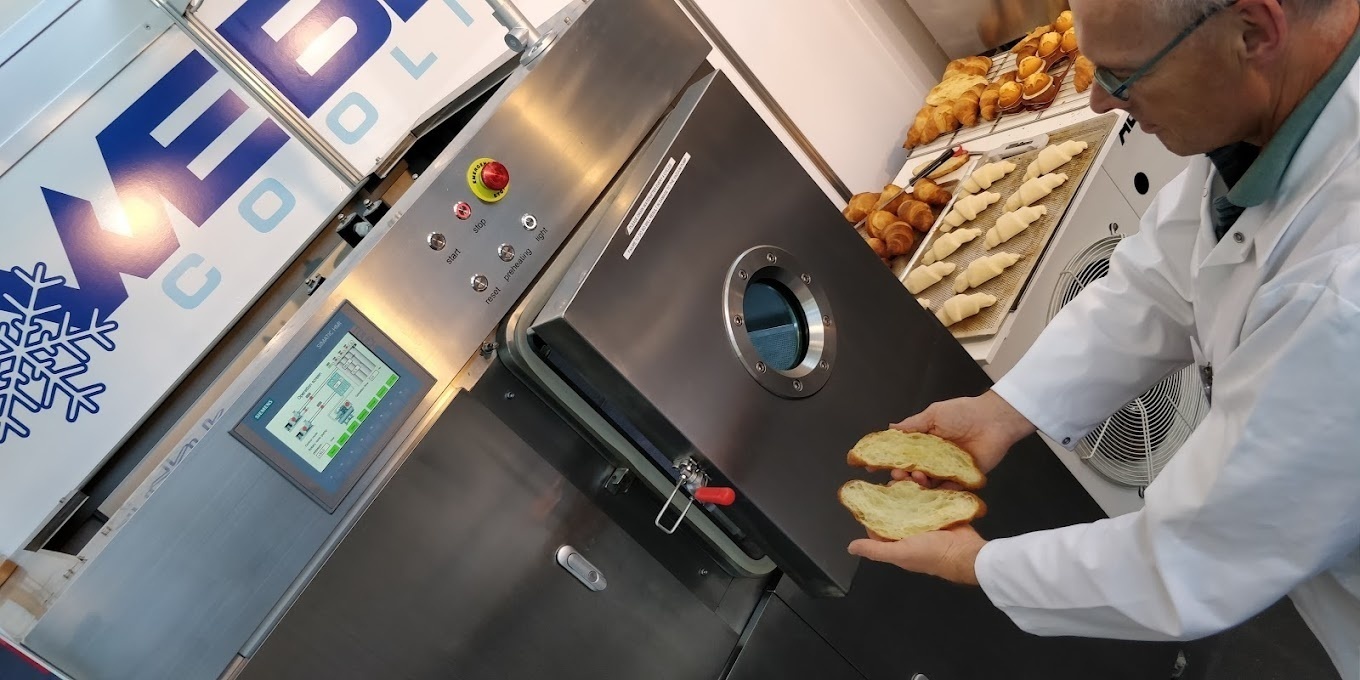Dimitrios Argyriou @GRAINAR | On Vacuum Cooling for baked products
Vacuum cooling is 🌬️ used to rapidly cool baked goods by placing them in a chamber where the pressure is significantly lowered below atmospheric levels. For instance, reducing the core temperature of loaves to 25°C can take about 10 minutes with vacuum cooling, as opposed to 100 minutes with conventional cooling methods. 🕒
The main principles of Vacuum Cooling technique include:
1. Lower Boiling Point:
When the pressure inside the chamber is decreased, the boiling point of water is also reduced. For example, at half an atmosphere (0.5 bar), water boils at approximately 80°C instead of the usual 100°C. 🌡️
2. Evaporation and Latent Heat:
The cooling process relies heavily on the evaporation of water. Lowering the pressure causes water in the baked product to evaporate at a lower temperature, which removes latent heat and thus cools the product more quickly. 💧➡️❄️
3. Moisture Gradient:
The cooling effect begins at the surface due to evaporation and gradually moves inward, creating a moisture gradient where the surface loses moisture faster than the center. 📉
Potential Applications
Vacuum cooling is especially advantageous for certain baked goods, particularly those with delicate structures or specific textural needs. Some applications include:
1. Delicate Structures:
Products such as brioche, which are fragile and difficult to handle right after baking, benefit greatly from vacuum cooling. This process helps stabilize their structure quickly. 🥐
2. Crusty Bread:
For crusty breads, the moisture loss difference between the surface and the center is usually acceptable and can enhance the desired crust texture. 🍞
3. Shorter Baking Time:
Vacuum cooling can potentially shorten the baking time. By quickly stabilizing the product structure, the overall baking process can be more efficient. ⏱️
Considerations and Limitations:
1. Product Dimensions:
The efficiency of vacuum cooling is influenced by the size of the product. Larger items may show significant moisture loss differences between the surface and the center. 📏
2. Moisture Loss:
Vacuum cooling might lead to higher overall moisture losses compared to traditional cooling methods. This can affect the texture and quality of baked goods like pan breads that need uniform moisture content. 🌫️




